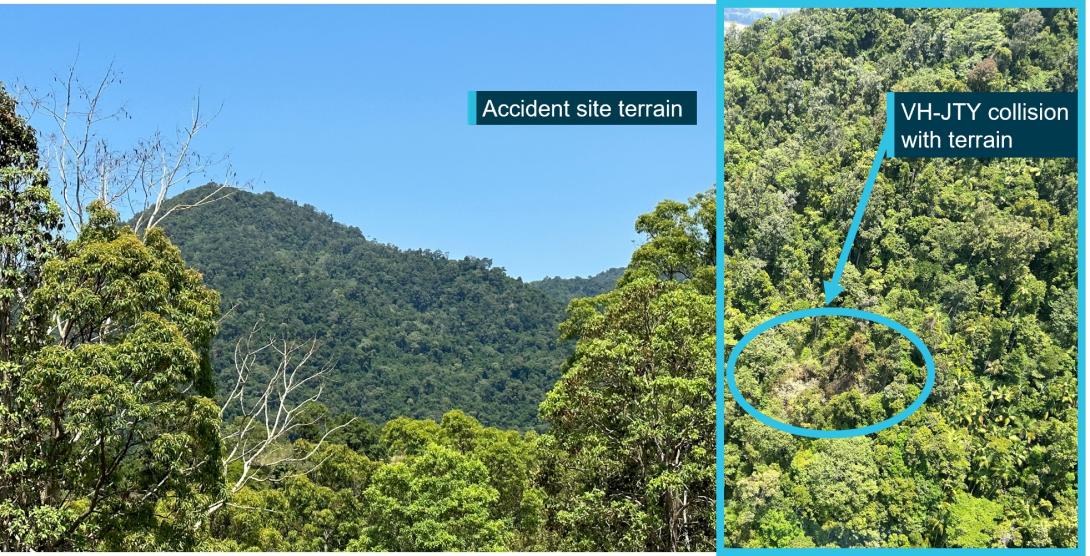The Australian Transport Safety Bureau’s investigation into the destruction of a light aircraft and the deaths of its pilot and passenger revealed a variation on a familiar and deadly theme.
Early on the morning of 28 October 2023, a Socata TB-20 Trinidad took off from Montpelier near Townsville, Qld, for a one-hour VFR private flight south to Palmyra near Mackay, also in Qld. The pilot and passenger were married and had flown the route many times.
About 20 minutes before landing, the pilot made a phone call to a friend at Palmyra, asking about the weather. When the friend mentioned cloud, the pilot replied that they would need to go through some cloud before arriving. The friend called again a few minutes later but ended the call, when the pilot reported being at 5,500 feet and about to commence descent for landing.
Things went wrong very quickly less than a minute later. Soon after beginning descent, the aircraft made a steep descending turn to the left towards mountains. Speed briefly exceeded VNE, before a pitch up that took it over the 815-metre (2,733-feet) peak of Bull Mountain. Immediately after, however, it began a second steep descending turn, this time to the right. Recorded flight path data ceased soon after.
Later that morning a rescue helicopter investigated smoke on the north-east face of Bull Mountain and found the wreckage in dense forest. The aircraft had collided with terrain at a steep angle, and with significant forward speed. Helicopter crew winched down to the site confirmed both people on board were dead.
The ATSB report categorised the crash as VFR into IMC, loss of control and collision with terrain – yet another example of a crash type that has killed pilots for more than100 years. The pilot and his wife, who was also a qualified (although expired) visual pilot, were well aware of the dangers of encountering cloud or darkness: they kept motor vehicles at their properties in Palmyra and Townsville and on several occasions had used these instead for the journey when they judged the weather unsuitable for visual flight.
It appears the pilot had developed a ‘hack’ or workaround, to minimise these monotonous and dangerous road journeys. His peers reported he would use the autopilot if he ever had to fly through cloud.
The Trinidad had been delivered new in 1985 with a King autopilot that controlled pitch and roll. This had developed minor issues consistent with its age, the ATSB said, and had been repaired in 2022 after an uncommanded disconnection. The ATSB considered an autopilot fault causing uncommanded control inputs unlikely in the accident as no distress call was received and ‘the nature of the previous autopilot failures would not induce a loss of control.’
The autopilot was designed to disengage if excessive pitch or roll was encountered and would sound a two-second disconnection alert.
The ATSB report says, ‘It is not known whether the autopilot disconnect was intentional or why the pilot’s reported strategy of using autopilot when flying through cloud failed on this occasion.’
It goes on to conclude, ‘For a non-instrument-rated pilot, even with basic attitude instrument flying proficiency, maintaining control of an aircraft in IMC by reference to the primary flight instruments alone entails a very high workload that can result in narrowing of attention and loss of situational awareness. While autopilot can be used to reduce workload, it is not infallible and should not be relied upon or used by VFR pilots as a risk mitigator to decide to fly into unsuitable conditions.’





